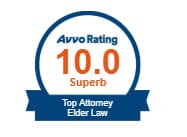By Ronald A. Fatoullah, Esq. and Debby Rosenfeld, Esq.
 {5:26 minutes to read} The capital gains tax ("CGT") is a tax imposed on the profit that is realized by an individual when he or she sells certain types of assets. The most common capital gains are realized from the sale of stocks, bonds, precious metals and real property. Although it is often said that nothing in life is certain except death and taxes, the one tax a person may be able to avoid or minimize the most through planning is the tax on capital gains. The following is some pertinent information to help one implement such planning.
{5:26 minutes to read} The capital gains tax ("CGT") is a tax imposed on the profit that is realized by an individual when he or she sells certain types of assets. The most common capital gains are realized from the sale of stocks, bonds, precious metals and real property. Although it is often said that nothing in life is certain except death and taxes, the one tax a person may be able to avoid or minimize the most through planning is the tax on capital gains. The following is some pertinent information to help one implement such planning.
1. What is capital gain? Capital gain is the difference between the "basis" or cost in property-usually real estate or stocks, but also including artwork and collectibles-and its selling price. The basis is usually the original purchase price of the property.
For example, if a person purchases a home for $50,000 (basis) and later sells it for $300,000, the capital gains on such a sale will be $250,000. However, the basis can be adjusted if the owner of the property spends money on capital improvements. If, after buying one's house, the owner spent an additional $50,000 updating the kitchen, the basis would now be $100,000 and the gain on its sale would be $200,000 ($300,000 - ($50,000 + $50,000) = $200,000). Accordingly, it is important to keep good records of any capital improvements made to real property in order to authenticate them in the event of an audit. (The residence exclusion and the step-up in basis are discussed below.)
2. How much is the capital gains tax? The CGT rate will often depend on the income level of the taxpayer. One can assume the federal rate is 15 percent unless the taxpayer has either very low or very high income, and the state one resides in imposes a tax as well (we can assume 5 percent, for a total of about 20 percent). Using these assumptions, the tax on $200,000 of gain would be about $40,000.
There are three exceptions to these rules. First, if the individual owned the property for less than a year, he or she would be subject to short-term capital gains tax rates, which are essentially the same rates as the ordinary income tax rate. Second, if one's taxable income, including the capital gains, is less than $37,650 for a single person and $75,300 for a married couple (in 2016), there is no federal tax on capital gain. Nonetheless, the capital gains will be included in this calculation and could put a taxpayer over the threshold. Third, if one's income exceeds $415,050 for a single person and $466,950 for a married couple (in 2016), the federal capital gains tax rate is 20 percent, bringing the combined federal and assumed state rate up to over 25 percent.
3. The personal residence exclusion. A person is entitled to exclude up to $250,000 of capital gain on the sale of his or her personal residence, provided he/she has lived in and owned the house for at least two out of the five years prior to the sale. The two years do not have to be the same for residence and ownership. For instance, if one lived in the house from 2012 to 2014 and owned it from 2014 to 2016, but rented it out, he/she could still qualify for the exclusion. If a person selling the house is a nursing home resident, the two-year requirement is reduced to one year. A married couple will be entitled to an exclusion of $500,000 because each spouse's exclusion can be joined together.
4. Carry-over basis. If an individual gives property, such as shares of stock or real estate, to someone else, the recipient of the property will retain the same basis. For example, if parents gift to their children a vacation home with a fair market value of $500,000 that they purchased many years ago for $25,000, the children's basis will also be $25,000. If the children then sell the home, they will have a capital gain of $475,000 and no personal residence exclusion, because they did not own and reside in the home for at least two of the previous five years. The combined state and federal tax would be approximately $118,750.
5. Step-up in basis. On the other hand, the basis in inherited property gets adjusted to the value on the date of death. In the example of the vacation home, if the parents passed it onto their children upon their demise rather than giving it to them during life, the basis would be adjusted to $500,000, potentially saving the children $118,750 on its sale. On the other hand, depending on the size of the parents' estate, the value of the house may be subject to estate tax, which would be payable within nine months of the parents' death, while the tax on capital gain would not be due until the children sold the property, perhaps decades in the future.
6. Offsetting losses. In a taxable year, any capital gain realized through the sale of property can be offset by capital losses. If, for example, someone sells his/her home and realizes a significant gain, he/she can also sell some stock that has gone down in value, creating a loss that offsets some of the gain on the house sale. In some instances, a taxpayer can carry over loss from one tax year to the next to offset future gains.
By understanding and considering these rules, property owners can save on capital gains taxes and avoid a number of potentially expensive mistakes. It makes sense to seek professional guidance to help implement this type of planning.
Ronald A. Fatoullah, Esq. is the principal of Ronald Fatoullah & Associates, a law firm that concentrates in elder law, estate planning, Medicaid planning, guardianships, estate administration, trusts, wills, and real estate. Debby Rosenfeld, Esq. is a senior staff attorney at the firm. The law firm can be reached at 718-261-1700, 516-466-4422, or toll-free at 1-877-ELDER-LAW or 1-877-ESTATES. Mr. Fatoullah is also the co-founder of JR Wealth Advisors, LLC. The wealth management firm can be reached at 516-466-3300 or 800-353-3775.






No Comments
Leave a comment